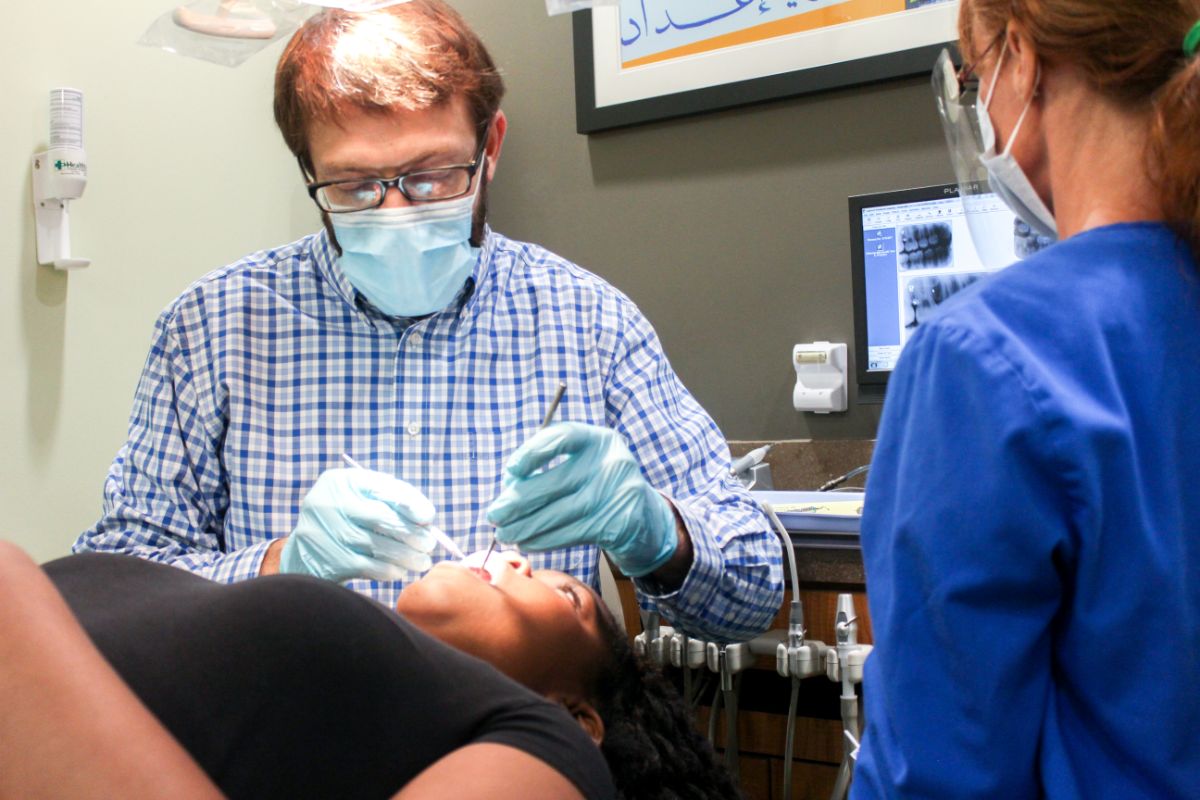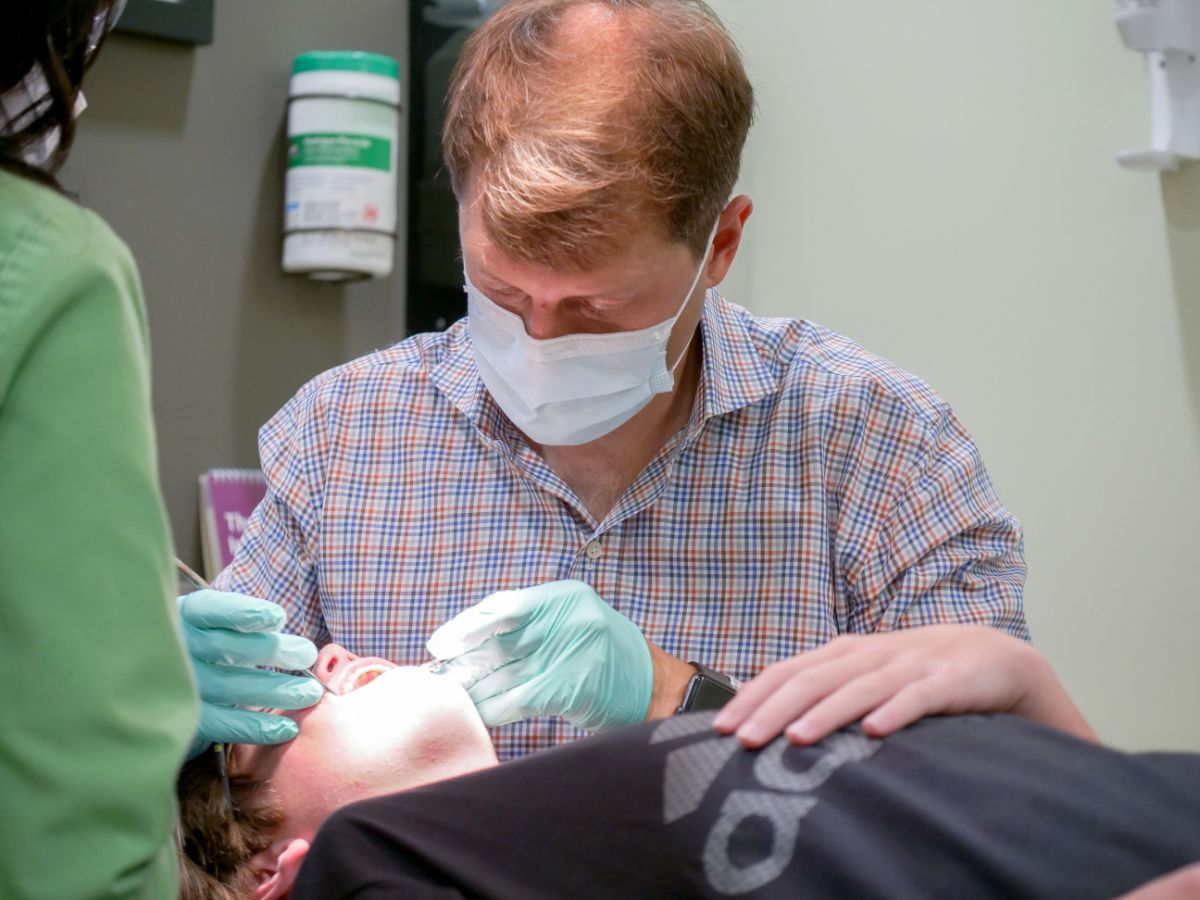In today’s world, we have access to information on just about everything we could imagine within minutes, thanks to the internet and mobile devices. While this is incredibly useful, it can be a bit overwhelming! When you’re asking questions about your child’s dental and orthodontic care, it can be difficult to know which sources are trustworthy and which should be disregarded. Trying to determine if and when your child needs orthodontic treatment may leave you with more questions than you started with. Questions like “should my child get braces?” can lead patients to seek out help in finding answers. If this sounds relatable, the team at Children’s Dental Center is here for you!
We’re happy to give you the information you need to make the best decision for your child. If you’ve been looking for clear, direct, and expert facts from a trusted and qualified dental source, you’re in the right place. To learn more about dental and orthodontic treatment for your child, keep reading below!
The first step in your child’s braces journey
The very first step in determining if your child is a good candidate for braces treatment is an initial consultation with one of our doctors. The American Dental Association recommends that a child’s first dental appointment be scheduled by their first birthday. Building this long-term relationship with your child’s dentist allows them to keep up with their development and address any issues that may arise and address them early.
It’s recommended for children to visit an orthodontist around the age of seven to further monitor their oral development and health. At this age, most children will have a mix of permanent and baby teeth. An examination by our doctors will give them the chance to find, diagnose and treat many common dental problems before they get too serious. This early intervention, also known as Phase I treatment, can reduce the need for more extensive treatment later in life.
By being proactive in your child’s dental care, we can ensure they get the care they need at the best possible time and in the most effective way. Phase I treatment can achieve results that may not be possible once the jaw and face have finished developing later in a child’s life.

Phase I Treatment
As any parent knows, all children grow and develop at different rates, and their smile is no different! The best age to begin treatment will vary from child to child. However, early examinations allow us to determine how and when a child’s specific issues should be treated in order to achieve the best results with the least amount of time and expense.
Children will sometimes show early signs of jaw problems as they grow and develop. For example, the upper and lower jaw may be growing too much or not enough. Jaws that are too wide or narrow can also be recognized at an early age. When these issues are noticed in children over the age of seven, they may be candidates for Phase I treatment.
Most children still have baby teeth at this age, which may lead you to wonder if they can still begin braces treatment. While exact treatment plans vary from patient to patient, braces can be a wonderful option for patients who haven’t lost all of their baby teeth. In cases of severe crowding, braces can encourage baby teeth to loosen and fall out to make room for the incoming permanent teeth. Treatment that is interceptive can prevent long-term consequences and better overall oral health for your child.
How Phase I treatment works
During Phase I treatment, we generally use fixed or removable orthodontic appliances over the period of several months to correct poor jaw growth, create space for developing teeth, and help the facial muscles develop correctly. This may be necessary for one or both jaws. If you’ve noticed any of the following issues in your child, we may suggest Phase I treatment after an examination by one of our doctors.
- Protruding upper front teeth (overjet)
- Severe crowding
- Lower teeth in front of upper teeth (underbite)
- Severe overlapping of the front teeth (deep bite)
- Front teeth that don’t overlap (open bite)
For young patients who demonstrate a clear need for early intervention, Phase I treatment gives us the opportunity to:
- positively influence jaw growth
- harmonize the width of the dental arches
- improve eruption patterns
- decrease the risk of trauma to protruding upper front teeth
- correct or eliminate harmful oral habits
- improve aesthetics and self-esteem
- simplify or shorten treatment if later orthodontics are needed
- reduce the likelihood of impacted permanent teeth
- improve certain speech problems
Once Phase I treatment is complete
After your child completes Phase I treatment, any appliances will be removed and we’ll begin an observational period. Every 4-6 months, we’ll monitor the eruption of your child’s permanent teeth, and may recommend a retainer during this time.
This phase of treatment leads to long-term stability, meaning that your child’s teeth will stay in whatever position we guide them to. Even so, many Phase I patients will go on to Phase II treatment eventually in order to stay on track with the stabilizing process, moving teeth to their final positions for a straight, healthy smile. This can require additional braces treatment or an aligner system to finalize bite correction.
Creating a healthy smile for your child at Children’s Dental Center
At Children’s Dental Center, we believe that your child is unique and so is their smile. That’s why we create a custom treatment plan for each child we see based on their specific needs.
We’re proud to offer expert care and treatment to even the youngest patients in Collierville, Midtown, Arlington, and the surrounding areas. We’d love to meet you and discuss your child’s long-term dental care and how it can benefit their smile! Contact our office today and we’ll get started!

